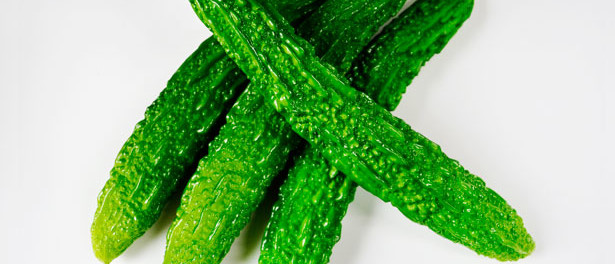Ampalaya: a Natural Solution to a High Blood Sugar… and More.
Having a high level of glucose or sugar in the blood (hyperglycemia) is a common problem among people with diabetes. Though there are numerous medications available in the market to address this looming health concern, many are still in search of natural ways to counter this growing “sweet” problem.
If you really think about it, what better way is there to counteract the adverse effects of sugar sweetness than to apply its exact opposite — which is bitterness, more specifically, ampalaya or bitter melon. Across the globe, bitter melon is also known as: bitter gourd, karela, papailla, melao de sao caetano, sorosi, a’jayib al maasi, assorossie, balsam apple, balsam pear, chin li chih, ejinrin gule khandan, fu-kua, k’u kua, kor-kuey, ku gua, lai p’u t’ao, pava-aki, salsamino, sorci, sorossi, sorossie, sorossies, pare, peria laut, peria.
Popular for its medicinal value in Asia, this oddly shaped vegetable-fruit has been proven to lower the glucose level of the blood. Ampalaya is a tropical and subtropical vine of the family Cucurbitaceae, widely grown in the Amazon, Carribean, and in Southeast Asia such as the Philippines for its edible fruit. Due to the presence of momordicin, it is believed to be among the most bitter of all vegetables.
The Ampalaya bitter melon (Scientific Name: Momordica Charantia) contains significant compounds, which help lower the glucose level in the body. About 2,000 mg of bitter melon should be consumed per day to be able sufficiently lower a person’s glucose levels. Lectin and polypeptide-P are insulin like compounds which regulates the carbohydrates. Lectin reduces the concentration of glucose in the blood, and also helps to suppress the appetite.
Aside from glucose lowering compounds, bitter melon contains twice the amount of potassium of a banana, and has significant amounts of iron, phosphorous, calcium, Vitamins A, B & C. Taking juice made from ampalaya also helps to treat constipation. It also helps improve the movement of the gastrointestinal tract and improves the absorption in the intestines. It also aids in stimulating the liver for the proper secretion of bile juices that are essential for the metabolism of fat in the body.
Ampalaya is also known to alleviate the symptoms of rheumatism and gout, as well as help in lowering blood pressure levels. Other benefits include: treatment of intestinal worms and diarrhea; enhances the body’s immune system; serves as an effective antioxidant, antipyretic and antibacterial agent; disinfects and helps to heal minor cuts, burns and wounds; alleviates cough and fever; and aids in cancer prevention.
Some people have developed an acquired taste for ampalaya and have no problem eating it raw and freshly chopped as a salad. But if you don’t like its bitter taste, you can take it as a supplement or as a tea drink, which are both readily available in most supermarkets and drugstores. So if you are looking for a natural way to keep your blood sugar down and within normal levels, the ampalaya bitter melon would be a great alternative.
___________________________________
References:
Diabetes.co.uk. (n.d.). Bitter melon and diabetes. www.diabetes.co.uk/natural-therapies/bitter-melon.html
George Mason University. (n.d.). Bitter Gourd. www.mason.gmu.edu
Habicht, S. (n.d.). Bitter gourd health benefits. www.bitter-gourd.org/health-benefits/ www.medicalhealthguide.com/articles/ampalaya.htm
www.drinkbenefits.com/health-benefits-of-bitter-melonampalaya.htm

